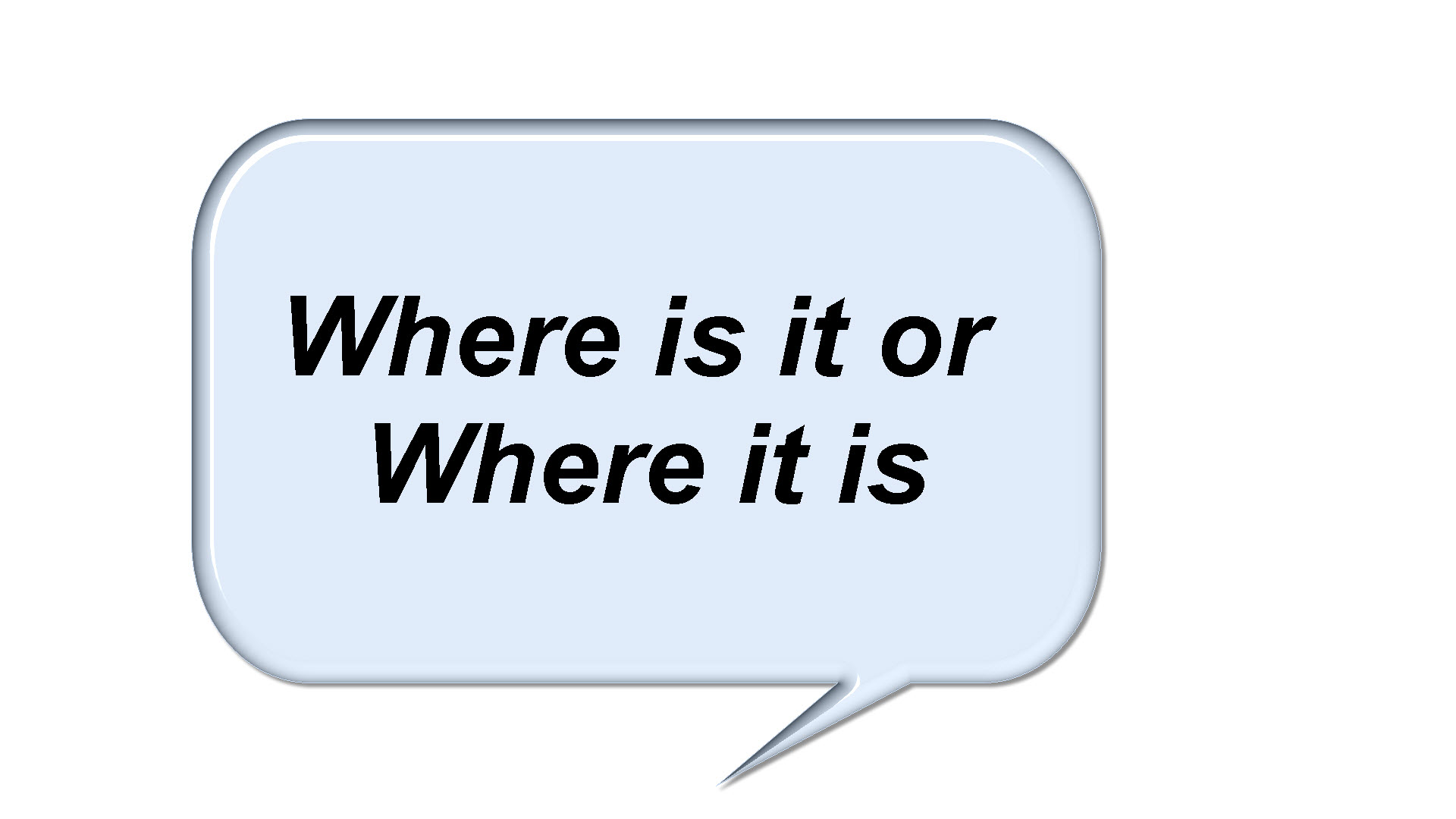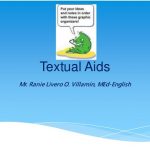Either “where is it” or “where is it” is correct. The verb appears after the subject in declarative sentences (where it appears), but in interrogative sentences (where it appears), the order is reversed and the verb appears after the subject.
Firstly it is an interrogative sentence, but the second is not, it is a part of a declarative sentence that requires a proper context.
Does where it is or where it belongs to the correct grammatical order?
Which of the following sentences describes its location? When there is a question mark at the end of the first sentence, it is grammatically correct. Since the subject comes after the verb, it becomes a grammatically correct interrogative sentence.
Also, the second sentence is grammatically correct when it is used with a declarative sentence. This is correct for a declarative sentence, but incorrect for an interrogative sentence since the subject comes before the verb.
Obviously, the first sentence is the correct one to use as an interrogative sentence since it is where it is. The second sentence can also be used as an interrogative sentence. Despite being incorrect for an interrogative sentence, it is a fragment of a declarative sentence. It is correct to use either of these sentences if they are used in the right context.
Do you know where it is?
The sentence represents an interrogative. There should be a question mark at the end. There is no knowledge of the location at the time of the speech. The speaker wishes to know where it is. In addition, in this sentence, the subject comes before the verb, which indicates that it is an interrogative sentence. It would become clearer if a noun was inserted in its place.
- The park is located where?
What is its location?
As opposed to an interrogative sentence, this is a declarative statement. Speakers will typically use it when talking about the location. For instance, if we say that the hotel is on the ground floor
- How do I find the park?
An interrogative phrase:
A question is asked in an interrogative sentence. An interrogative sentence asks a question based on its grammatical structure. Ending an interrogative sentence with a question mark indicates that it is an interrogative sentence. We often ask our neighbors questions about ourselves and our surroundings in our daily lives because we ask them so many questions about ourselves and our surroundings. We can gather information and clear all the confusion from our minds by using this sentence. Two people can also conduct interesting conversations by using this statement.
Organizing:
Like an ordinary assertive sentence, an interrogative sentence has a subject and a verb, but they are arranged differently. Subjects appear after the verb or between the parts of the verb in interrogative sentences.
Here are some examples:
In addition to brushing your teeth, you have also taken a shower. (Declaration of fact)
Having is a helping verb in the above sentences (helping verbs are also called auxiliary verbs. They are used along with the main verbs). Following the helping verbs is the subject.
Is your mouth clean? 2. Have you brushed your teeth? (“Are you brushing your teeth?”)
These types include:
Two types of questions can be asked in an interrogative sentence.
- When a questionnaire asks a question such that a yes-or-no response is expected or a static response, it is known as a closed-ended interrogative sentence. In other words, the questionnaire indirectly provides the question with options in this type of situation. One word answers are possible.
An example would be:
The first argument. Are you a fan of apples? The second argument. Would you like to eat something? 3. Do you enjoy swimming?
- Inquiry that can be answered in any way:
The questionnaire asks an open-ended question that cannot be answered with a yes or no answer. A complete response is required to these types of questions. Speakers already know the answer to these types of questions.
A typical open-ended interrogative question begins with an interrogative word.
In an interrogative sentence, questions are asked using interrogative words. There are eight words in this list: what, which, where, when, who, whose, whom, why, whether, and how. Most of these words begin with the letter WH, which is sometimes called WH-words.
An open-ended interrogative sentence begins with a question word or an interrogative word, followed by a verb and subject.
An example would be:
- Where is the best way to reach the mosque? 2. Where do you live? 3. Where did you sleep last night?
What is it?
What is the location of the sentence? Is an open-ended question sentence that begins with a question word and consists of a verb and subject. This question relates to the location of a specific place.
- What is the location of the Faisal mosque?
- What is the location of the garden?
This sentence presents the interrogative sentence in the correct order.
The following is the declarative sentence:
An affirmative sentence is a type of sentence that gives statements. It is also called an affirmative sentence. The reader can gain knowledge regarding a particular topic by reading these sentences. They are always punctuated with a period in the end.
The sentences above are very common in English because we use them every day in our everyday conversations. They are declared sentences, as their name indicates.
Organizing:
There is a subject, a verb, and a predicate in a declarative sentence. When the verb follows the subject, the sentence is declarative.
Here are some examples:
- A cricket game was on his mind. 2. Her hobby is playing the piano. 3. A two-day rainstorm had taken place.
There are other forms of declarative sentence:
Sometimes, declarative sentences can be used in imperative form to command or order, in exclamatory form to express emotions, and in interrogative form to ask a question.
Imperative form:
When written in the imperative form, it is written as if it is giving an order or command. However, it may appear to be a statement.
An example would be:
The door will now be closed. It is an imperative sentence that the door be closed.
Form of exclamation:
As well as expressing an emotion or feeling, declarative sentences also convey a feeling.
Here are some examples:
The heat was unbearable in Beech!
However, it is also an exclamatory sentence since it is expressing emotions as well.
Formule d’interrogation:
In its interrogative form, declarative sentences can also be used.
In a declarative sentence, the questions are asked to clarify the information while in an interrogative sentence, the questions are asked to gather information.
An example would be:
- Was a letter written by him? 2. Did he sign the letter? Was it written by him? (Interrogative sentence)
It is more appropriate to identify these statements in our common speech.
We used to make our voices a little higher at the end of the declarative sentence to indicate that we are asking a question rather than providing information or stating a fact.
What is its location?
The phrase or fragment “where it is located” is a declarative phrase. The grammatical order is incorrect when asked as a question.
You can use this sentence as:
- It is located where I know it is.
The following declarative sentence will, however, become an interrogative when used…
- Is it in the same place as where I am?
The question can then be used as an interrogative, but will emphasize on the subject.
Synopsis:
Accordingly, both “where is it” and “where it is” are correct grammatically, but their contexts are different. It should be followed by a question mark since the first sentence is interrogative. As for the second one, it is part of a declarative sentence and not an interrogative phrase. In our daily lives, we ask questions using interrogative sentences. The verb precedes the subject in these sentences. There are two types of interrogative sentences: open-ended and closed-ended. What is the location of the sentence? There is no answer to this question. The next type of sentence is a declarative sentence, which makes simple statements or provides information. Typical declarative sentences fall into this category. They use a verb following a subject. In addition to imperative and exclamatory forms, they can also be used in interrogative forms. Located in a common declarative sentence, it is part of a sentence. Although it is also a declarative form of interrogative sentence.
Read More: Leslie Kotkin
Frequently Asked Question
1. When and where should it be used?
Its use is as follows:
The word “it” is usually used to describe objects, not living creatures.
This can be used:
Any object that is this close that can be touched is referred to as “this”
2. Can it be used for individuals?
Yes, the pronoun “it” can be used to refer to a person whose gender is unknown. The word “it” is most commonly used when referring to children or babies.
3. What does it mean to have an empty subject?
Nothing can be said about an empty subject. “It” and “there” are common empty subjects.
4. Who are the three people in English?
Three people speaking English
| 1st Person | 2nd Person | 3rd Person | |
| Singular: | I | You | He/She/it |
| Plural: | We | You | They |
Summary:
It is correct to use both sentences, but the second one requires more information.
A complete sentence is “Where is it?”. The answer is “where is it?”. This is a subject-verb sentence. Where is it? That’s not a complete sentence. The noun is missing. The sentence is incomplete. A verb follows a subject in this sentence. This tells about the location when written in the right context, so both of these are correct. If, however, you are asking “where is it?”, the first answer is correct.











